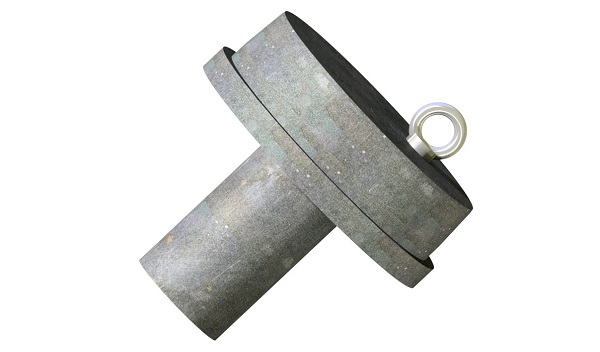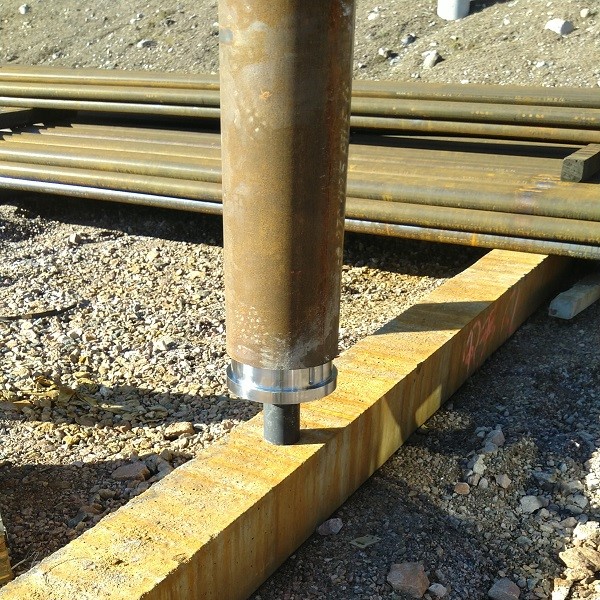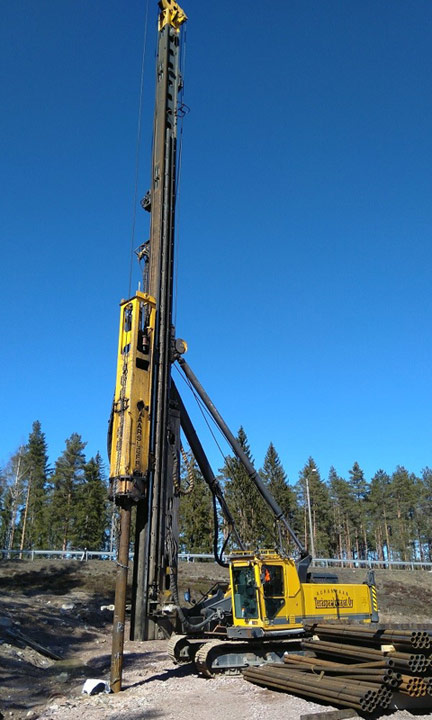New mechanically attached rock shoes for RR270 and RR320 pile sizes
Tested to fulfill most demanding requirements
New rock shoes have been tested to fulfill requirements in most demanding piling works. Tests consist of two phases, first impact blow tests at site conditions and then laboratory tests for the same samples.
At impact blow tests the piles are driven against the bedrock. The test consists of at least 500 impact blows with stress level of ≥ 0.75 times the yield strength of steel grade in question. With S550J2H steel grade this means stress level of at least 412.5 MPa. The stress level is monitored with PDA equipment throughout the whole test.
Figure 1. Impact blow tests for RR270 new rock shoe
After impact tests the piles are lifted up and inspected visually. The piles are taken to laboratory to go through set of another type of tests. The rock shoes and the connections between piles and shoes are tested for bending resistance and shear resistance.
Tips for lifting and attaching to pile
These sizes of rock shoes have quite high self-weight. To ease the lifting of the shoes at site, a hole with internal threads has been added to top of the base plate in shoes. A lifting eye can be attached to threaded hole to allow lifting with hook.

Figure 2. 3D model of RR320 rock shoe, lifting eye attached to threaded hole
Usually pre-tightening of mechanically attached rock shoe to pile pipe is done with a sledge hammer. This is not recommended for RR270 and RR320 rock shoes due to the size and weight of the shoes. Attaching of RR270 and RR320 rock shoes can be done by placing the rock shoe on top of for example previously installed pile or some other firm support. After that the pile pipe can be lifted with piling rig to shoe. Self-weight of pile pipe and hammer will pre-tighten the connection such way that piling can be started.

Figure 3. Rock shoe has been placed on top of firm support and pile pipe has been lifted to it with piling rig
Attachments
Category and tags
